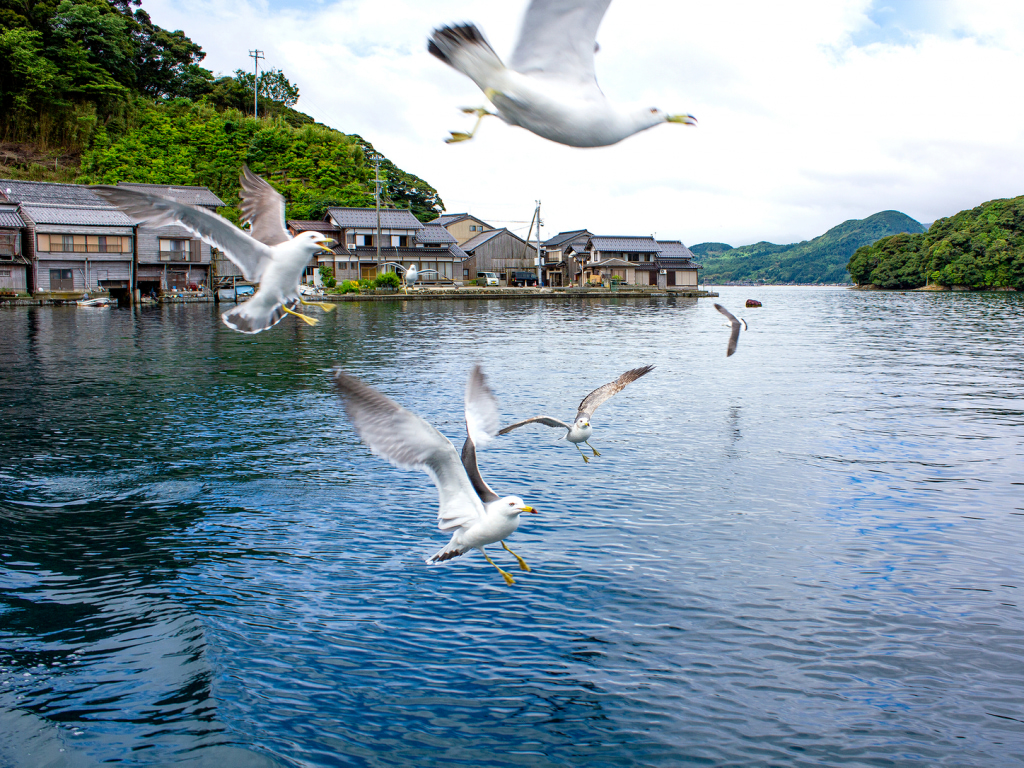Head approximately 130 kilometers north of Japan’s old capital and you’ll arrive at Japan’s roots. Kyoto Prefecture’s northern region was the first stopping point for visitors from mainland China, and it’s thought that this is where rice-planting was first introduced to Japan from the West. The area holds many secrets just waiting to be discovered for history buffs, adventure travelers, and gourmet tourists alike.
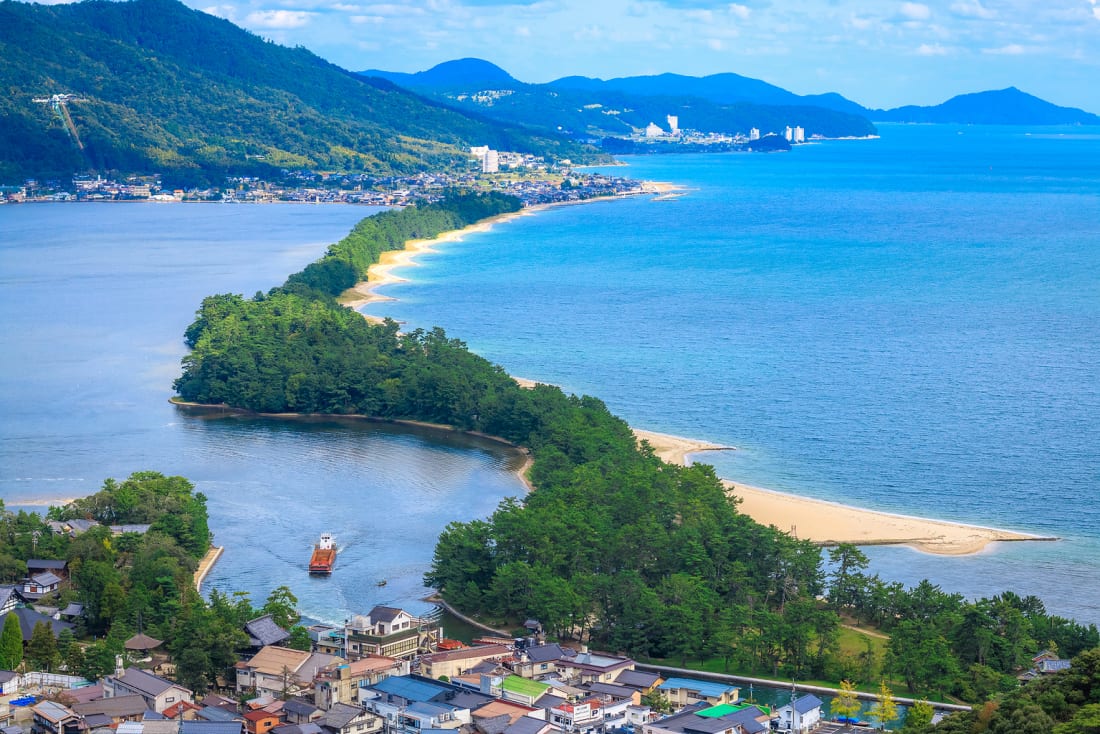
Amanohashidate
Take in the View at Amanohashidate
Known as one of Japan’s three most scenic views, this natural land bridge in emerald green stretching across a sea of sapphire blue seems to connect to another world. The shape of this magical strip of land resembles a dragon, and if you look at it upside down, it seems as if the dragon floats through the sky. Spying the isle from afar is popular, but you can also walk or cycle down the strip’s 3.6km length. Take a ferry to the tail and make your way back up to the dragon’s head. Here you can take a break at one of the four tea shops outside Chionji Temple, which all serve their version of chie no mochi, an anko (red bean) paste-wrapped mochi ball that is meant to make you wiser. Head into the temple grounds for further blessings of wisdom and brainpower.
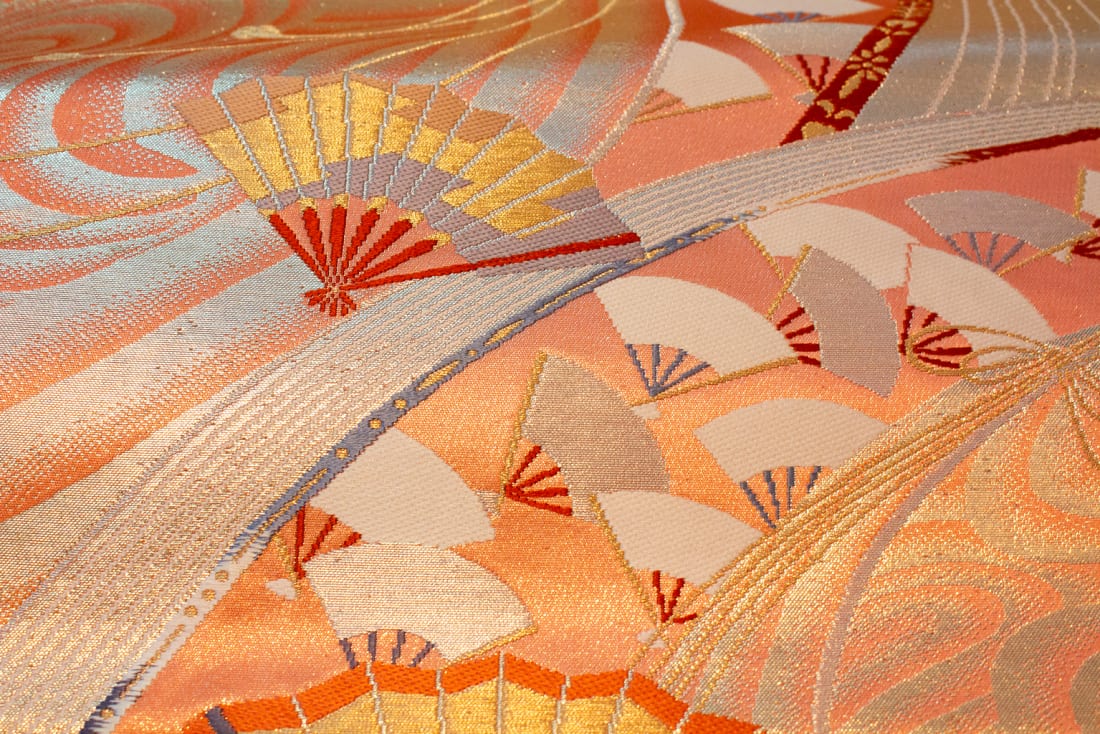
Chirimen kimono fabric
Walk Down the Historic Tango Chirimen Kaido (Silk Route)
Celebrating 300 years of chirimen (crepe silk) production in 2020, Tango is the heart of Kyoto’s kimono culture, but you’d never know it. Tango craftsmen are equally known for their skill as they are their humility. Over 70 percent of kimono fabrics sold in Kyoto use Tango-woven chirimen silk, but to the untrained eye it can be hard to spot as Tango craftsmen don’t boast their brand. To get a feel for the craft, head to the historic Tango Chirimen Textile Road, where traditional houses line the streets. Stop by Kouju Sasaki Salon to see some of the region’s most impressive pieces firsthand. Here you’ll find intricate woven works that range from ties to scarves, and even shoes. For a more in-depth look at the industry and its history, head to the Tango-Chirimen History Museum, which boasts weaving classes and an outlet shop.
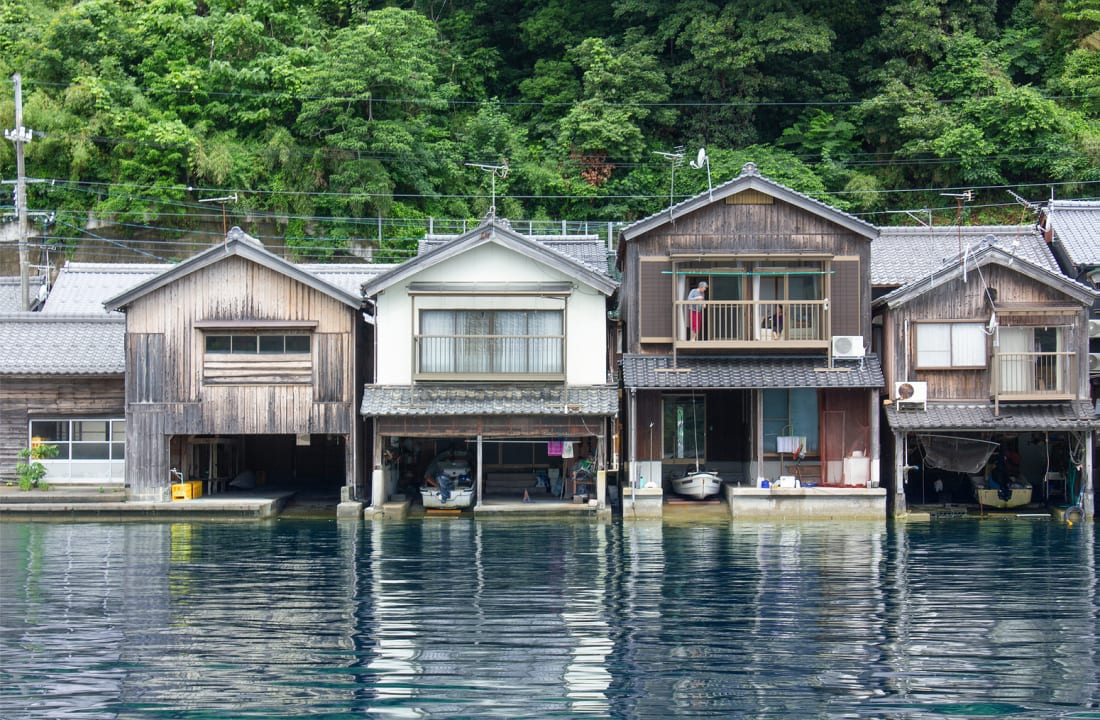
Funaya houses lining Ine Bay
Stay in the Unique Seaside Town of Ine
Tucked away in a south-facing bay lies Ine, a seaside town with 230 unique buildings, called funaya, lining a five-kilometer stretch of the coast. The people have lived in coexistence with the sea for centuries, and the funaya, formerly rudimentary straw boat storage houses, now stand tall at two or three stories above the water. The first floors serve as a combined boat storage and workspace for fishermen, while the second floors are used as living space. The seaside structures are unique on the coast of the Japan Sea, which is known for its strong winds and harsh weather that tend to beat the shore. Ine Bay faces south, protecting it from the worst of the weather, and also has a small uninhabited island, Aoshima, at the mouth of the bay that serves as breakwater, further protecting the town. Some funaya, including recently opened Aura, have converted the second floor living space into an inn to accommodate visitors seeking an authentic Ine experience.
The town also boasts Mukai Shuzo, a sake brewery that sits on the water – perhaps the only one of its kind – with a history that goes back over 260 years and serves a special sake that uses an ancient variety of rice, giving it a reddish color. This sleepy town shuts down early and is perfect for those seeking solitude. Drift off to sleep to the gentle sound of lapping of the waves under your window.
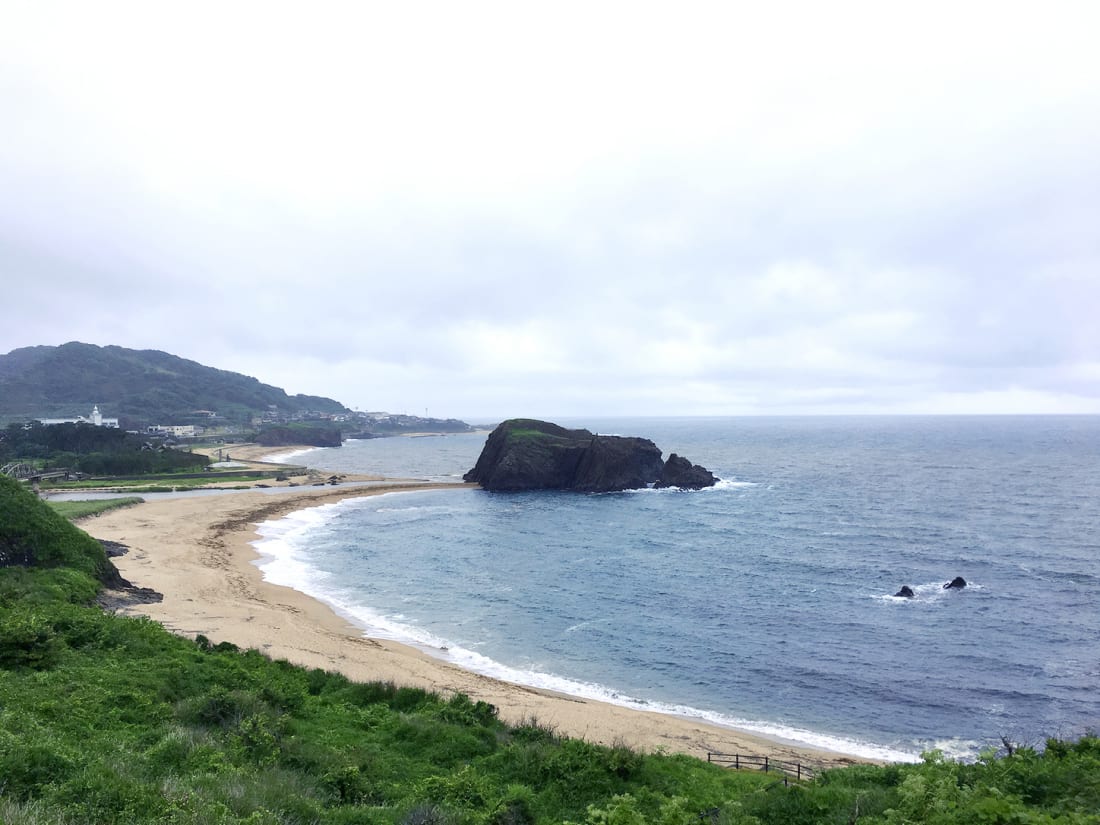
Tateiwa Rock
Drive the Coastal Route
Northern Kyoto is best explored by car, not because the area is remote, but because there are so many unexpected gems along the way. Staggering rock formations branching out into the sea with untouched beaches skirting the coastline, ancient burial mounds on cliff edges, and roadside hot springs are just some of the treasures you’ll find. Of these, one of the most distinctive is Byobuiwa Rock, a 13-meter-high rock that juts out of the raging sea. Its sharp, flat shape is reminiscent of a byobu (folding screen) is the perfect spot for a spectacular sunset. Head west to find Tateiwa Rock, a staggering monolith of bright red rock that can be reached from the beach. Just a stone’s throw away from this you’ll find the Onaru Burial Mounds, a collection of excavated 6th century graves that sit just a few meters from the edge of a cliff face. Finish your adventures at Ukawa Onsen Yoshino no Sato, a beautiful wooden structure that houses a restaurant, souvenir shop, and nearby lodgings. The hot springs here will ease any aches and pains, and the view of the sun setting into the horizon will soothe the soul.
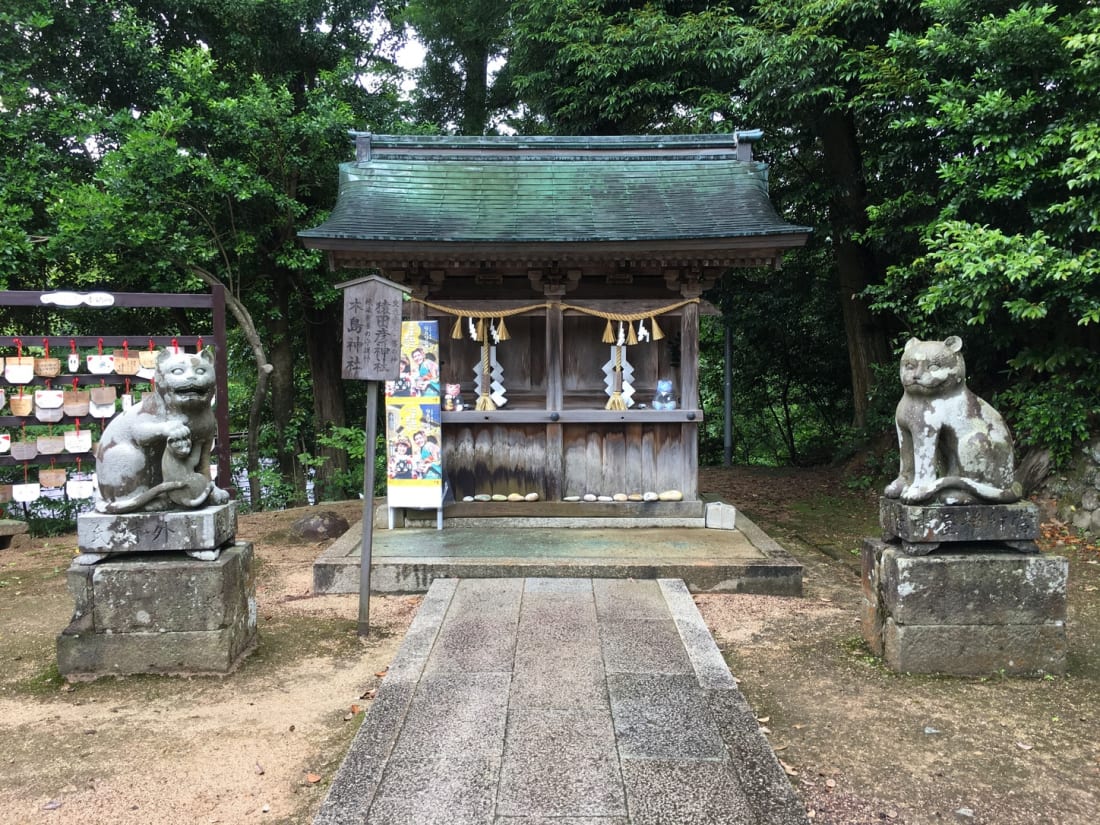
Kotohira Shrine
Make a Wish at the Cat Shrine
Kotohira Jinja is, as far as shrines go, relatively new as it is only about 200 years old. It was constructed as the region’s silk weaving industry flourished and in its heyday its festivals rivaled Kyoto city’s Gion festival in both popularity and lavish displays. The shrine has recently experienced a resurgence from an unlikely source – cat lovers. While most shrines feature komainu (guardian dogs) protecting the entrance, Kotohira Jinja boasts two vigilant cats. Because of the area’s close ties to silk production, they have long cherished cats for their ability to hunt and kill mice, which are silk craftsmen’s worst enemy. These feline saviors are celebrated every September at the Komaneko Festival with cat-shaped sweets and souvenirs. Best of all, no matter when you visit, you can paint your own komaneko guardian to take home.
For more information about Kyoto by the Sea, visit www.uminokyoto.jp/global
Sponsored Post

